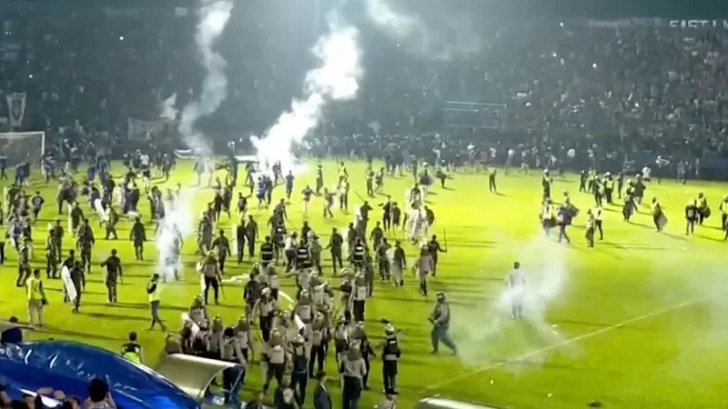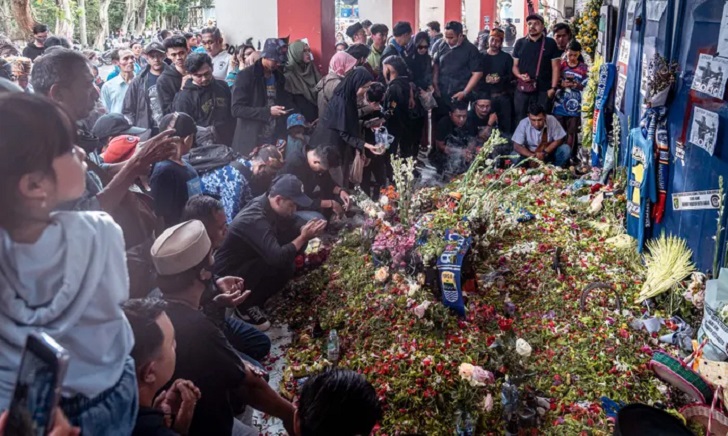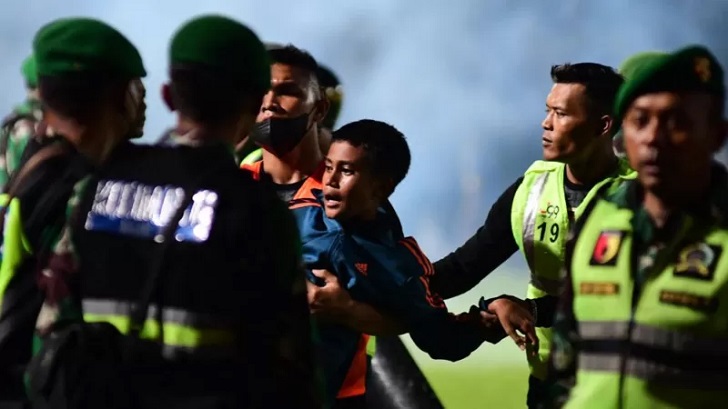On October 1, 2022, mayhem broke out in Indonesia as hundreds of supporters flooded the field at Malang’s Kanjuruhan Stadium following Arema FC’s 3-2 loss to East Java rivals Persebaya Surabaya. The use of tear gas by police caused crowds to race toward the exit gates. The surge caused an instantaneous stampede that killed hundreds of people. When the dust cleared, the death toll stood at 131, with hundreds more others injured.
Football fan culture in Indonesia is vibrant, and rivalries are fierce. The rivalry between opposing teams is so intense that away fans are generally barred from attending games, as was the case during the Kanjuruhan stadium disaster when only home Arema supporters were permitted to attend.

Rivalries have previously devolved into violence. According to government figures, 78 people had died in football-related accidents in the previous 28 years prior to the Kanjuruhan disaster. Armored vehicles are commonly used to transport away players to and from matches. Nonetheless, the disaster that killed 131 people in Malang regency, East Java, this month has temporarily ceased hostilities.
A fraught history

In the days leading up to the match between Arema FC and their long-time rivals Persebaya Surabaya, another East Java-based team, there were rumours of crowd violence. Extra precautions were taken, including increased security “for preventive measures,” according to the deputy secretary-general of the Indonesian Football Association.
They also prohibited visiting Persebaya fans from attending the game, so it was only a home crowd of 42,000 people who cheered on their team on Saturday night. However, when the game ended and Arema lost 3-2, some of the supporters ran out to the pitch, which initiated the breakout. What transpired next is obscure and the subject of intense debate. Authorities are unable to even provide a timeline of events on the field.

What is known is that after the final whistle, Arema fans made their way onto the pitch, where the team’s footballers were gathered in the center. According to the BBC’s Indonesian service, police had already escorted Persebaya to their changing rooms.
Many of those pouring onto the field appeared to be there to “show support, not attack.” Recognizing that the situation was deteriorating, the team returned to the locker room. At some point, police began firing volleys of tear gas into the thousands-strong crowd in an attempt to disperse them. According to one eyewitness, police fired tear gas rounds “constantly and quickly.” Witnesses claim that police were unnecessarily brutal and that officers were beating fans with batons in addition to the stinging gas clouds.
Uprising chaos
The incident sparked widespread public outrage, much of which was directed at the police and their use of tear gas. The chief of police in Malang, where the incident occurred, was fired, and nine other officers were suspended. Three police officers who used tear gas on fans, the head of Arema FC’s organizing committee, and one of the club’s security officers are among those facing charges.
According to national police chief Listyo Sigit Prabowo, two of the officers ordered their colleagues to use tear gas. The third was aware of FIFA’s safety regulations prohibiting the use of tear gas during matches, but this did not prevent it from being used. According to authorities, approximately 2,000 officers, including several police units and soldiers, were present at the stadium that night.

